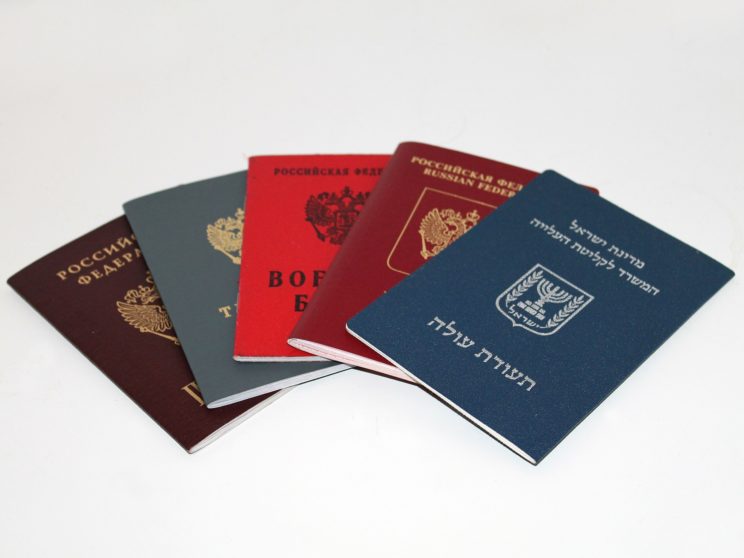The Immigration and Nationality Act (“INA”) gives an opportunity to US Citizens and lawful permanent residents to bring their children to the United States. US citizens can sponsor both their married and unmarried children. However, the unmarried children under twenty-one (21) fall under the category of immediate relatives who are exempt from numerical quotas applicable to other family based preference categories. The question whether the child falls under the category of immediate relatives is extremely important because if immediate relatives can obtain their green cards within less than a year, children of US citizens, falling under one of the preference categories, will have to wait at least seven (7) years depending on their country of citizenship and marital status.
Lawful permanent residents can only sponsor their unmarried children who fall under the Second Preference – spouses and unmarried sons and daughters of permanent residents. However, children under twenty-one (21) of permanent residents have certain privileges compared to children who are twenty-one (21) or older. First of all, seventy-seven percent (77%) of available visas in the second preference category is allocated to spouses and unmarried sons and daughters under twenty-one (21) of permanent residents. INA § 203(a)(2). Additionally, seventy-five percent (75%) of visas issued to spouses and unmarried children under twenty-one (21) of permanent residents are not subject to the per country limitations. Id. § 202(a)(4)(A). As a result, if children under twenty-one (21) of permanent residents can obtain their green cards within less than two (2) years, children who are twenty-one (21) or older will have to wait at least seven (7) years depending on their country of citizenship.
As it can be seen, the age of the child is crucial for both the petitions filed by US citizens and permanent residents. There is a possibility that although the petition is filed while the child beneficiary is under twenty-one (21) he will be twenty-one (21) or older at the time of adjudication of the petition. In 2002, the Congress enacted the Child Status Protection Act to protect children beneficiaries who turned twenty-one (21) after the immigration petition was filed on their behalf. These provisions of the Child Status Protection Act are known as “age-out protection” provisions.
Age-Out Protection for Children of US Citizens
Adjudicators must determine whether the beneficiary qualifies as an immediate relative child based on his age on the date of filing the immigrantion visa petition on his behalf. Id. § 201(f)(1). As such, the date when the US citizen parent files the immigration petition for his child, the Form I-130, determines whether the child falls under the category of immediate relatives or not. This means that although the child may turn twenty-one (21) after filing the immigration petition on his behalf, he will always qualify as an immediate relative as long as he is not married. The date of filing the petition is the date when the Form I-130 is filed with the United States Citizenship and Immigration Services.
Age-Out Protection for Children of Lawful Permanent Residents
Adjudicators shall determine whether the beneficiary qualifies as a child under twenty-one (21) of a lawful permanent resident by using the following formula: the age of the child on the date on which an immigrant visa number becomes available minus the number of days during which the petition for the child was pending. Id. § 203(h)(1). If the child is under 21 after using this formula he will benefit from the age-out protection provision of INA. The immigration petition is considered to be pending from the date of filing the petition until the date of approval. It should be noted that the beneficiary may benefit from the age-out protection only if he seeks to acquire a status of a lawful permanent resident within one (1) year after the availability of an immigrant visa number. Id.
The age-out protection provisions of the INA are intended to protect the children of US citizens and lawful permanent residents who turn twenty-one (21) after filing the immigration petition on their behalf. Hence, if the child of a US citizen or a lawful permanent resident will turn twenty-one (21) soon they should try to file the immigration petition before the child turns twenty-one (21) in order to benefit from the age-out protection provisions.
If you have questions regarding an immigration matter, we invite you to contact our immigration attorney for a free consultation at (310) 943-1171.
KAASS LAW is authorized to practice law in California. The above content is intended for California residents only. This content provides only general information which may or may not reflect current legal developments. KAASS LAW expressly disclaims all liability in respect to actions taken or not taken based on any of the contents of this website. The above content DOES NOT create an attorney-client relationship. KAASS LAW does not represent you unless you have expressly retained KAASS LAW in person at the KAASS LAW office.
KAASS LAW helps clients in Los Angeles, Burbank, Hollywood, Glendale, Van Nuys, North Hollywood, Studio City, Highland Park, Eagle Rock, Sunland, Tujunga, Sylmar, La Crescenta, La Canada, Beverly Hills, Westwood, Santa Monica, Brentwood. Pacoima, Montebello, Commerce, Alhambra, Downey, Bell, Maywood, Walnut Park, Vernon, Lynwood, Echo Park, Silverlake, Mission Hills, Northridge, Woodland Hills, Encino, Canoga Park, North Hills, Porter Ranch, Chatsworth, Reseda.

